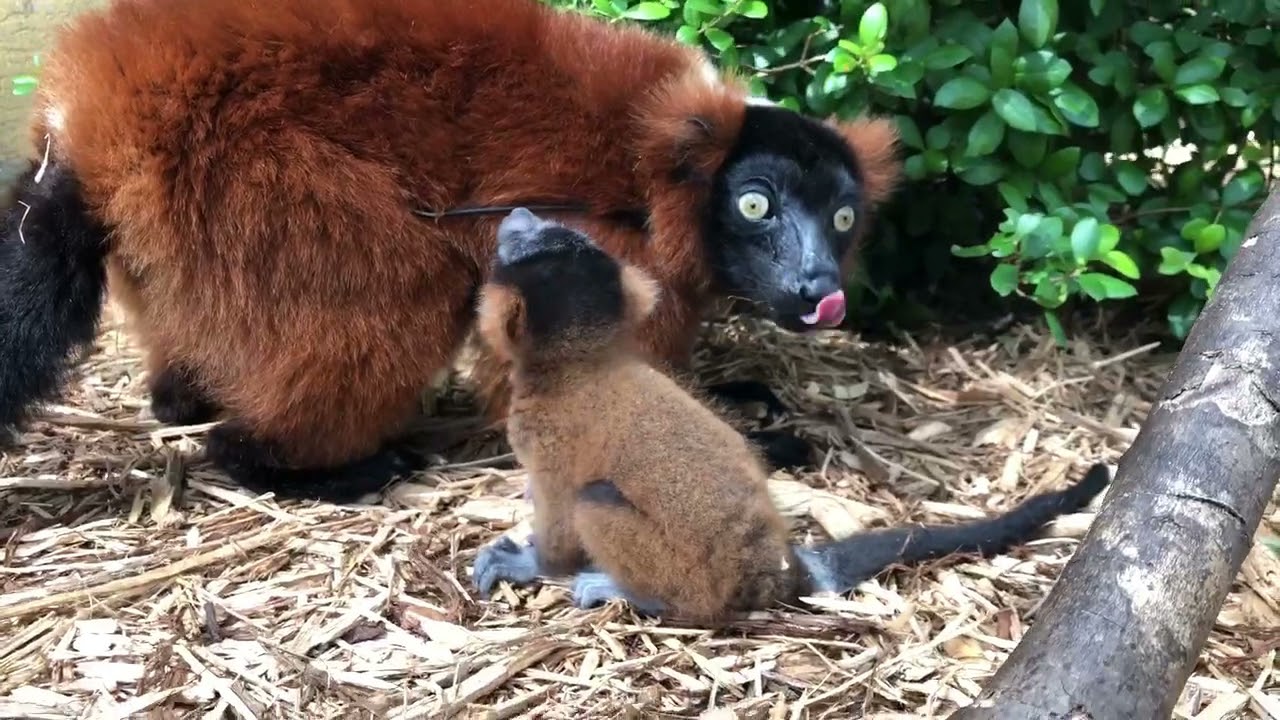- The significance of sibling interactions in zoo animals and their developmental benefits.
- Understanding Ravina’s infant’s playful behavior with big brother Frezy.
- The role of environmental enrichment in promoting natural behaviors in captive animals.
- The impact of early socialization on long-term health and well-being of zoo animals.
- Conservation implications of raising animals in captivity with respect to re-acclimatizing them to wild environments.
In the nurturing environment of zoos, animals, like Ravina’s infant and her older sibling Frezy, often engage in interactions that mirror social learning and development patterns observed in the wild. These exchanges are vital for cognitive and social development. Animal management professionals and ethologists recognize such behaviors for their educational and practical implications. Sibling interactions in zoos not only enhance animal welfare but also provide critical insights into the complexities of social bonds.
Ravina’s infant playing with big brother Frezy encapsulates the essence of play in the animal kingdom. In zoology, play is seen as an adaptive behavior crucial for the development of young animals. It teaches them acceptable social conduct, improves motor skills, and facilitates cognitive development. In controlled environments like zoos, such play fosters the natural expression of behaviors that help animals cope with the challenges of their environment. Observations reveal that while playing, the infant learns the subtle cues of initiating and terminating play sessions, understanding boundaries, and developing resilience. Frezy, as the elder, plays a pivotal role in this developmental process, demonstrating patience and sometimes corrective behavior, which is vital for the infant’s growth.
Zoo environments are enhanced with features that promote engagement and stimulate natural behaviors. Environmental enrichment is a cornerstone of modern zoo management, shaping the lives of captive animals. It aims to replicate stimuli animals would encounter in their natural habitats. By providing diverse sensory experiences, cognitive challenges, and social opportunities, these settings help mitigate the limitations of a life in captivity. For Ravina’s infant and Frezy, diverse play items and interaction zones are important. They help simulate complex social environments that animals are naturally inclined to explore, creating a dynamic space that keeps them physically and mentally stimulated.
The impact of early socialization extends beyond immediate developmental milestones. Properly socialized animals often exhibit stronger immune responses and reduced stress levels, thanks to the bonds they form during these early stages of life. For many species, early-life social experiences dictate future reproductive success and social structure compatibility. In zoos, emphasizing such interactions supports the psychological health of animals and aids in breeding programs aimed at species conservation. Familial bonds reinforced through play result in more harmonious group dynamics and facilitate future introductions within mixed-species exhibits or during species repopulation projects.
Conservationally, captivity raises critical questions about reintroduction and species sustainability efforts. Zoos play integral roles in conservation by acting as genetic reservoirs for threatened species. The ability of animals like Ravina’s infant to socialize effectively has direct implications on their adaptability when transitioning to wild environments. These facsimiles of natural behavior, cultivated from early sibling interactions, enhance their chances of survival post-release. Developing cooperative behaviors through interaction with siblings like Frezy may give the infant an edge in future social structures, crucial for forming alliances and avoiding conflicts in the wild.
Ravina’s infant, through its interactions with Frezy, represents a simple yet sophisticated model of learning and development in zoo settings. Understanding these dynamics sheds light on animal management practices that prioritize animal health and ecological integrity. As zoos continue to evolve with enhanced methodologies in husbandry and conservation, the lessons derived from studying such interactions remain indispensable in bridging the gap between captivity and the wild. These practices promise a hopeful future for conservation efforts worldwide, symbolized by the playful, innocent bond between two siblings thriving within the confines of human care.
*****
Source Description
Critically endangered red ruffed lemur Ravina’s infant is starting to explore her surroundings and learning to play with big brother Frezy! This infant was born on May 8, 2021 at the Lemur Conservation Foundation’s reserve in Myakka City, FL.


